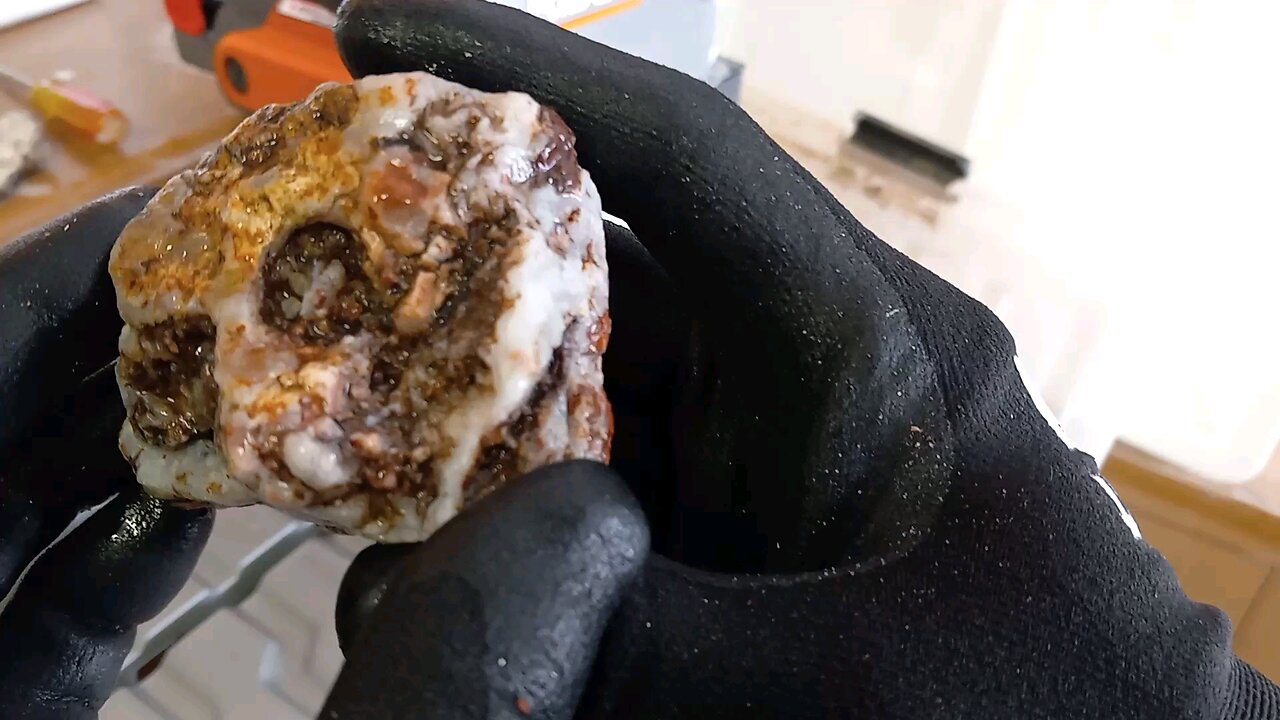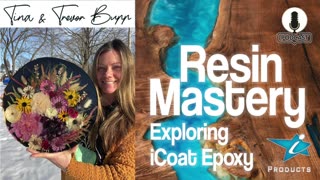Premium Only Content

More earthtones and opal inside!
Opal is a hydrated amorphous form of silica, with a water content typically between 3 and 21% by weight, most commonly around 6-10%. It's deposited at relatively low temperatures and can be found in the fissures of various rock types, including limonite, sandstone, rhyolite, marl, and basalt. Here's a deeper look into opal:
Types of Opal:
Precious Opal: Known for its "play-of-color," which is an optical phenomenon where colors flash or change as the angle of light or observation changes. This effect is due to the diffraction of light through the microscopic silica spheres within the opal.
Common Opal: Lacks the play-of-color and can come in a variety of colors like white, black, grey, yellow, orange, red, or brown. It's often referred to as "potch" when not gem-quality.
Fire Opal: Typically ranges in color from yellow to orange to red and can be transparent to translucent. Fire opals can exhibit play-of-color, but their name comes from the fiery body color.
Boulder Opal: A type of opal naturally attached to its host rock. It's often cut with the host rock to provide stability and to enhance the visual appeal.
Matrix Opal: The opal fills the cracks and cavities within the host rock, creating a network of opal that's visible on the surface.
Formation:
Primary Opal: Forms through the slow deposition of silica from groundwater in cavities or fractures of rocks.
Secondary Opal: Can form by weathering or alteration of other minerals, often in more superficial environments or through the action of silica-rich waters.
Locations:
Australia: The world's leading source, especially for precious opal, with significant deposits in places like Coober Pedy, Lightning Ridge, and White Cliffs.
Ethiopia: Known for its black opals and more recently discovered opal fields.
Mexico: Famous for fire opals.
Brazil: Produces a variety of opals, including crystal opal.
Properties:
Hardness: Typically ranges between 5.5 to 6.5 on the Mohs scale, though it can be softer if less hydrated or harder if more silica-rich.
Luster: Can range from waxy to resinous to vitreous.
Transparency: Varies from opaque to semi-translucent to transparent.
-
 12:28
12:28
The Gun Collective
16 hours agoWOW! 13 NEW Guns JUST Released!
22.3K5 -
 7:00
7:00
The Shannon Joy Show
14 hours agoMedical Freedom’s Dark Secret: HHS & COVID Truth Buried?
16.2K2 -
 31:18
31:18
Uncommon Sense In Current Times
15 hours ago $1.01 earned📺 Title: Iran, Israel and Bible Prophecy! | Mark Biltz
23.2K4 -
 59:56
59:56
Trumpet Daily
21 hours ago $3.69 earnedMerz Will Not Be Germany’s Strongman - Trumpet Daily | May 6, 2025
20K12 -
 8:49
8:49
The Lou Holtz Show
16 hours agoLou Holtz: “Sports Bring Us Together—Politics Tore Us Apart!” Trump’s Vision for 2027 & Beyond #NFL
22.5K1 -
 39:34
39:34
iCoat Products for Builders, Artists, and Network
3 days ago $0.29 earnedBupp Woodworks and Design: Flower Preservation, Live Edge, and River Tables. - Episode 17
16.2K -
 22:18
22:18
Michael Franzese
17 hours agoHow Many Epstein Accusers Have to Die Before We Get the Truth?
413K98 -
 8:13:23
8:13:23
FreshandFit
1 day agoDiddy Trial Day 2, India vs Pakistan, Israel Takes Gaza, Ye vs Piers!
201K40 -
 12:41
12:41
Dr. Nick Zyrowski
1 day agoBenefits of One Meal A Day (OMAD) Intermitted Fasting
34.3K24 -
 2:41:07
2:41:07
TimcastIRL
13 hours agoIndia Launches AIR STRIKES On Pakistan, Nuclear War Feared, Trump Calls For QUICK END | Timcast IRL
352K112